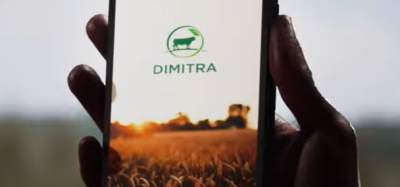Digitalising pest management: the new frontier for smarter food and drink production
Posted: 17 June 2025 | John Stewart | No comments yet
For the food and drink manufacturing sector, managing pest issues is a fundamental pillar in supporting robust operational practices. Here, John Stewart at Pelsis Group reveals how digitalisation can enhance traditional pest control measures for more timely and precise intervention when it’s needed.


Credit: Arno Senoner/Unsplash
With some of the most rigorous health and safety standards, failure to keep pest management high on the agenda can leave food companies open to significant business risks.
Evidence of nonconformances in audit scores can lead to enforcement action, forced closures and the risk of long-term reputational impact owing to the negative publicity these can attract.
By enhancing responses to infestations, food and drink production sites and their pest control partners can dedicate more effort to additional proactive measures….
Rodents are often high on the list of target pests in food and drink manufacturing, given their role as a vector for many diseases, and can be traced by environmental health officers. Alongside health issues, rodents also expose businesses to such costly problems as damage to building fabric including insulation, wiring and pipework.
However, another pest of equal concern for food and drink manufacturing businesses is flies and flying insects.
Like rodents, these creatures are highly effective at spreading disease and bacteria, such as Salmonella, Shigellosis and E. coli. Data shows that the house fly and blowfly together harbour more than 600 different bacteria, many linked to human infections such as stomach bugs, blood poisoning and pneumonia.
To tackle these issues, pest controllers and facilities managers ordinarily adopt an integrated approach to pest management comprising four key practices: exclusion, detection, restriction and monitoring (EDRM).
At Pelsis, this is something we consider as we develop solutions that empower businesses to adopt this approach using the latest technology. An example of this is digitalisation – a core focus of our continual research and development activity.
Digitalising pest control solutions represents an exciting opportunity for food and drink businesses to enhance their operating practices, and it’s important to know how they align with integrated pest management.
Monitoring – the first step in navigating integrated pest management
To effectively manage infestations and ensure they do not escalate to become full-blown challenges, the first step is locating where pests are breeding.
Most pests, especially rodents, are nocturnal and cryptic – ie, difficult to distinguish from other similar species – making it difficult for pest control officers and facilities managers to detect them during normal working hours. This highlights why vigilance against infestations is a continual activity.
Traditional tools, such as traps, require pest controllers to use a physical inspection regime, which is usually performed monthly, depending on the site.
During these inspections, signs of pests may not be visible but, more concerningly given the health and safety risks, an infestation could also have escalated significantly if no monitoring takes place outside of the inspection windows.
Technicians would also rely on pests leaving evidence. With rodents, this would be droppings or marks left on edible blocks left to test for their presence, while fly and flying insect remains would indicate infestations.
This can be a laborious and time-consuming process, especially if the site has numerous different traps in hard-to-reach areas. It also brings an extra health and safety risk for staff if they regularly access hard-to-reach places or sites at height to monitor for activity.
Effective monitoring is the first step in empowering food manufacturing businesses to apply integrated pest management strategies.
It also represents an area where digital technologies are evolving practices significantly.
Digitalising pest monitoring
Remote pest monitoring solutions, such as Pelsis Digital Insect Light Traps, have added new capabilities to management strategies.
Reflecting the ‘always on’ nature of pest control, digital solutions now offer 24/7 monitoring where pest controllers and facilities managers can access camera displays on smartphones, tablets or computers across multiple monitoring sites.
Compared to traditional approaches, users can gain immediate insights into potential infestations without needing to be physically present on site.
Complementing 24/7 monitoring capabilities is the option to set up instant alerts. This means if pest numbers are increasing, an immediate alert can be sent out rather than waiting for the next physical inspection of monitoring sites, allowing for timely interventions.
Remote monitoring also removes the impact of human interference. This is an acute issue with rodents, who will hide to avoid detection. Yet with remote monitoring, small sensors are used that are not recognised by the rodents.
How digitalisation enhances pest exclusion, restriction and destruction
The benefits of digitalising pest control not only emerge with monitoring, but throughout all stages of an integrated approach to tackling infestations.
Immediate insights into pest species and locality of activity afford the benefit of faster identification of potential infestation challenges.
This enables a timely, tailored response with the right solution to remove the pests.
By enhancing responses to infestations, food and drink production sites and their pest control partners can dedicate more effort to additional proactive measures. For example, auditing buildings to identify pest ingress points, addressing housekeeping issues such as exposed food sources for rodents and undertaking any additional staff training.
Harnessing data for long-term improvements
With digitalisation comes data, and for food and drink manufacturers, having the ability to analyse pest trends can further enhance responses to infestations and tailor day-to-day operating practices accordingly.
Data insights also bring a greater level of transparency between sites and pest auditors.
In addition, by integrating emerging AI and predictive analytics technology, sites can help stay on the front foot before infestations occur.
Looking ahead
Pest management will remain a perennial issue for food and drink businesses, and with factors such as changing seasons and increasing global temperatures, the likelihood is that it will become more acute.
Food and drink businesses will need to keep pest management high on the agenda, and digitalisation demonstrates how emerging technologies are enhancing, and not replacing, traditional practices.
Getting proactive with digital solutions will give food and drink businesses and their pest control partners a more proactive, meaningful footing to ensure pest issues do not escalate into challenges.
Meet the author


John Stewart, Technical Training Manager at Pelsis
John Stewart BSc is a technical training manager at Pelsis, a leading global pest control manufacturer and supplier, with over 20 years of industry experience. A graduate and industry-qualified biologist, he delivers specialist training across domestic and industrial sectors in the UK, equipping professionals with the skills and knowledge needed for success.
Related topics
Data & Automation, Equipment, Food Safety, Hygiene, Robotics & automation, Sanitation, Supply chain, Technology & Innovation









